August 31, 2018 Leave a Comment
ShareTweetPin+1WhatsApp0 SharesHere’s a quick task for you – ask around your friends and family members to see how many of them childproofed their homes when their babies arrived. Chances are that you’ll find most of them either haven’t heard of childproofing, or didn’t think it was important enough. And that is the general opinion in most homes in our country, unfortunately. If you’ve been wondering whether childproofing is important or not, let’s take a look at some hard facts.
Why should you childproof your home?
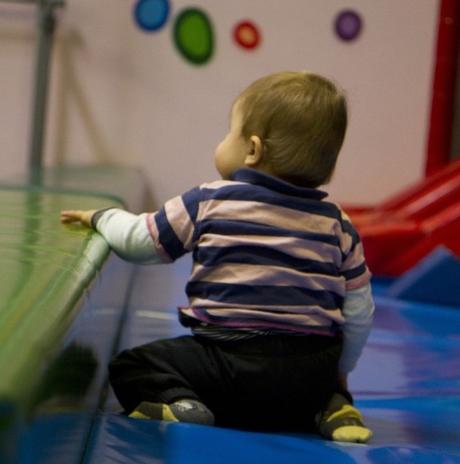
A study was conducted by International Journal of Health Sciences and Research on a sample population of children in India, and these were the findings:
- 78% of the sample population had been subject to home accidents of one kind or the other
- Girls were found to be more involved in accidents than boys
- The age group who were the most vulnerable were school going children, followed by toddlers and preschoolers
- There seems to be a larger incidence of home accidents among children in rural areas
- Common accident causes are falls, burns, poisoning, cuts, poisoning, choking, inhalation of foreign
bodies, sports injuries, drowning.
Here are some findings from UN organizations:
- The WHO estimates that over 630 000 children under the age of 15 die due to an injury
- A report by the WHO and UNICEF states that Every day more than 2000 children and teenagers die from an injury which could have been prevented.
You can read the full report by UNICEF here.
As you can see, home accidents are a big cause for death and disability in children under 10. While these numbers are scary, they show that many of these accidents can actually be prevented with a little effort from our end. The Indian study mentions that most parents and teachers in India are unaware of proper safety methods for children, and very few know or actually implement childproofing in their homes or schools.
And that’s just one of the many challenges you’ll face regarding childproofing in India. There is a severe lack of regulations when it comes to anything related to babies and children, like nursery furniture, toys or even food products. Then we have issues like sudden power cuts which can create more dangerous situations. Then there is the discouragement for elders and others, who think you’re crazy to spend money on strange-looking gadgets that you don’t really need.
But you know the truth now – childproofing can prevent accidents and injuries, and even save lives.
When should you childproof?
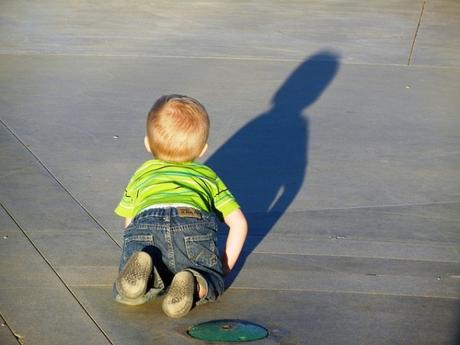
When you think about it, you only need to worry about childproofing once your baby starts to crawl, but practically speaking it’s not a good idea to wait that long. Your home should ideally be childproofed before the baby arrives, or at least as soon as he’s home. Babies grow up faster than we think, and you’re not going to get much free time in the early days to sit and research on all the things you’ll need to make your home safe for baby.
Then there’s the question for how long you need to leave the childproofing on. This is a harder question to answer, since every child and every home is different. Increased physical mobility in growing kids makes them more vulnerable to accidents, so you might want to leave them on for some time. Even if kids have outgrown your childproofing methods, leaving them will give kids an understanding of barriers and staying away from danger.
How to go about Childproofing
Set aside enough time to get down on your hands and knees for a better idea of everything that’s at your child’s level. You may be quite surprised at all the things you can now access! Start noting down potential dangers as you go from room to room. It’s good to have two people to do this, so that what one misses can be spotted by the other.
You’ll see all the places that can climbed upon, all the things that can be pulled down and the things that can be ingested or inhaled. To know which objects are a risk, use the toilet paper roll rule. Anything that fits through the hole of the toilet paper roll is small enough to cause danger. The advantage of doing this exercise is that at the end of it, you’ll have a complete idea on all the things that need to be removed, replaced or reinforced. This way, if you’re hiring someone, he can do it all in one go.
Once you’ve taken stock of all the dangers, check out our tips here. These will give you solutions for all those dangers that you spotted and probably make you aware of some you may have missed! We’ve taken a room by room approach here so it’s easier for you to plan your childproofing tasks.
Note: If you’d like more information on the childproofing materials mentioned in these tips, you’ll find it at the bottom of this post, in the Childproofing Essentials Checklist.
60 Childproofing Tips for your Home

Bedroom
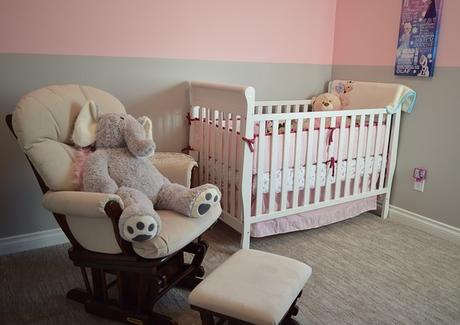
1. Ensure that all of baby’s furniture is painted with lead-free paint and are sturdy enough. In case you’re using second hand furniture, pay extra attention to all the parts and reinforce the screws, belts etc.
2. Place baby’s crib away from windows, curtains and blinds, clocks, paintings, wall art etc. It’s very easy for babies to pull themselves up on the edge of the crib and then pull down anything within reach.
3. Make sure that the crib’s slats are close together – not more than 2 and a half inches apart. The gap shouldn’t be big enough to let a soft drink can pass through. This is to prevent baby’s head or limbs getting stuck.
4. The mattress needs to be snugly fitting inside the crib, leaving no space in between for baby’s fingers.
5. Remove any soft toys, fluffy pillows and bumpers from baby’s crib to avoid suffocation.
6. When moving older kids to another bed, install a bed guard rail to prevent falls.
7. A Baby Monitor is a good idea to keep an eye on your baby at all times. Get one with video for better supervision when you’re not in the room.
8. Keep all personal care products – even baby’s things – out of reach. Take this into consideration for changing tables too, so you can reach the items but baby can’t.
Bathroom
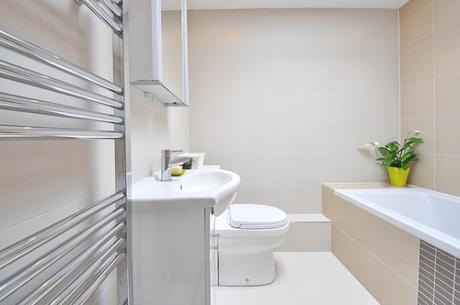
9. Always keep the bathroom door shut at all times. Lock it if your child is tall enough to reach the door handle.
10. Place a large anti-slip mat inside the bathtub and outside it. This will prevent the baby and you from slipping, especially if you have a toddler who runs around wet.
11. Fix a soft safety cover for the tap so that baby won’t get hurt if she bangs her head.
12. Fill the tub with just enough water to cover baby’s legs. Any more is a drowning risk.
13. Test the water’s temperature with your wrist to gauge whether it’ll be too hot for your baby. If that’s confusing, get yourself a bath thermometer.
14. Never ever leave baby alone, even for a few seconds to grab your phone to attend a call or take a cute picture. Take your phone with you when you go in the first place, or take your baby out with you.
15. Keep all your medicines locked away in a high shelf. If that’s not possible or practical for you, get yourself a Medicine Safe that can’t be opened by little hands.
16. Electrical appliances in the bathroom pose an extra risk of electrocution, so keep blow dryers, flat irons, electric shavers and the like unplugged and on a high shelf.
Kitchen
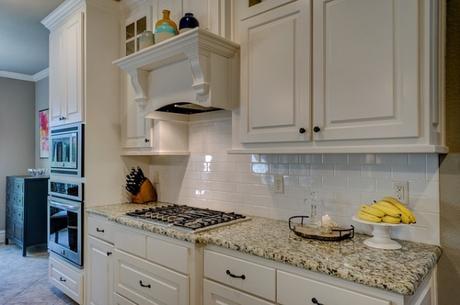
17. Most stove knobs can be accessed by toddlers, and they can easily turn on the gas. Avoid this by fixing knob covers on each of your stove knobs.
18. For better protection, install a stove guard, a large protective shield that completely blocks any access to the stove’s controls.
19. When cooking, always use the back burners. If you need to use the front burners, place the pot so that the handle is facing away from you.
20. Keep all kitchen appliances unplugged and out of reach. If their wires and cords are all over the place, keep them under control with cord bundlers.
21. Make sure that sharp objects like knives, scissors and grinder blades are out of reach. Many Moms carry babies into the kitchen and while they’re getting a glass of water, the baby can easily grab something that’s within reach.
22. It’s difficult to keep everything in the kitchen on high shelves, especially if you’re strapped for space. Keep babies away by using cabinet locks so they can’t open the doors and get into the cabinets.
23. Avoid frustration and distract babies from attempting to open the locked cabinets by keeping one low cupboard unlocked. Fill it with safe materials to play with, like wooden spoons and plastic containers.
24. Many of us tend to store cleaning liquids under the sink but this is dangerous when you have babies crawling around. Move all chemicals to a higher shelf, far out of reach.
25. Better still, go for eco-friendly cleaning liquids that don’t have harmful chemicals. You can even try making your own with vinegar, baking soda and lemon juice, but still keep them out of reach.
26. Never put chemicals in food containers, like cleaning liquid in a soft drink bottle. This can be very dangerous not just to babies, but to older kids as well.
27. Opt for unbreakable dishes like steel, so that there is no chance of a dish breaking and pieces of glass scattering everywhere.
28. When handling hot dishes or pans, check to see if your baby is anywhere nearby so you don’t accidentally trip.
29. Avoid fridge magnets when your child is young. The magnet could fall off and land on the floor, and baby could end up swallowing it.
30. Plastic bags pose a suffocation risk for young children, so if you tend to collect plastic bags, put them in some place your child can’t reach. Or still better, just get go for fabric or jute bags.
Living/Dining Areas
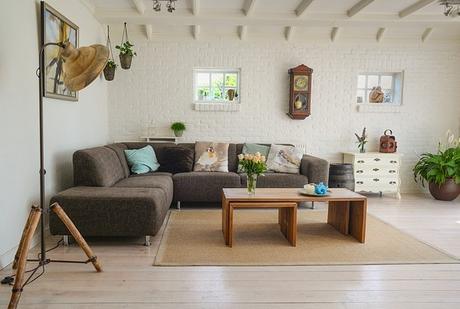
31. Avoid tablecloths on any table. It’s very easy for a young child to tug at the end of a tablecloth and everything on the table will tumble down on him.
32. Hanging cords can cause strangulation and pulling them can also make things fall, causing injuries. Remove anything with a hanging cord, or find an alternative solution that doesn’t include anything hanging.
33. Extension cords with lots of cables and wires can cause children to trip, or they can follow the wires all the way to an electrical socket. Place them higher up, or place them so that the wires run behind heavy furniture.
34. Tables, chairs and many other pieces of furniture tend to have sharp corners. Keep baby safe by covering them with soft cushioned corner guards.
35. With small kids at home, it’s best to mount your TV on the wall, or screw it to your entertainment center. Most TVs stands tend to wobble, so they’ll fall down without too much effort from a child.
36. If you have tall fancy lamps or vases, place them behind sturdy furniture so they can’t be pushed over.
37. Many accidents happen because heavy furniture fall down on young children. Avoid this by screwing furniture to the walls. This is especially important if you live in an area prone to earthquakes.
38. Install a grille for your fireplace if you have one, making sure it’s high enough so kids can’t climb over and far enough so kids standing next to it won’t get burnt.
39. Phone cords are another strangulation risk, so if you have old fashioned phones, it’s a good idea to replace them with cordless phones.
40. Move all breakables and fancy curios and showpieces out of the way. Keep them away locked up in a box – you can take them out when the kids are older!
41. Soft thick carpets can help cushion falls and also provides a warm surface to play on when it gets cold. Make sure they’re firmly resting on the floor by using anti skid pads underneath.
42. Give your child a toy box without a lid to protect fingers getting caught between the lid and the box.
43. Choose toys and toy boxes made of fabric or sturdy plastic. Wood is also a good option, but make sure that it’s completely smooth without any splinters.
44. Many of us have a tendency to walk into the house and leave our handbags on the nearest table. Handbags contain lots of things that can cause suffocation, choking or even poisoning in young children, so have a designated, higher spot for your bag.
Outdoors

45. Keep your child safe by installing a car seat in your car. Get one from a reliable company and make sure it’s the right one for your baby’s age.
46. The metal parts of car seats can get overheated and even cause burns. Use a heatproof cover on the car seat when not in use to keep all parts cool.
47. The seats on supermarket trolleys are a convenient way to prevent your toddler from wandering, but make sure the seat is safe by carrying along your own safety belt.
48. If you have a pool at home, it is absolutely essential to install a fence all around it that’s at least 5 feet high. Be very careful with children around any body of water.
49. Lock up sheds or outhouses all the time, especially if you use them to store tools or other equipment.
50. Install grilles for balconies and keep the door closed. Avoid perching on the grille – kids see this and may try to do the same.
General Tips

51. Make sure every unused electrical socket is covered with a safety plug. There are many varieties and some are easy for kids to remove, so do your research accordingly.
52. Install window guards and safety netting on all windows, especially if you live in an apartment high rise. Have door stoppers on every door so baby’s fingers don’t get caught.
53. If you have a staircase at home, a child gate is absolutely essential. Make sure it’s one the child can’t climb over or unlock by himself.
54. Install smoke detectors in every room of the house. Check their functioning periodically and change batteries frequently.
55. Take stock of all your house plants. Kids like to play with mud, so keep them out of reach. Some plants can be toxic if chewed; get rid of them right away.
56. It’s a good idea to have a play pen or play yard. In case of any emergency where you need to put your baby in a safe place while you attend to the crisis, a play pen will serve your purpose.
57. Regularly sweep or vacuum to pick up small objects that baby may pick up and put in mouth.
58. Keep chairs, small ladders or step stools away from any possibly dangerous place, like the kitchen stove or balcony railings. Kids can climb on the chair and reach these places in no time.
59. Make sure all areas of your home are well illuminated – especially staircases and corridors – so there are no chances of accidents due to lack of visibility in the dark.
60. Keep a fire extinguisher in an easily accessible place for you, and make sure you know how to use it.
Childproofing Essentials Checklist
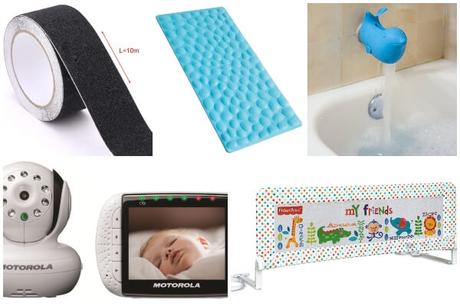
- Anti skid tape
- Non-slip bathroom mats
- Tap Cover
- Baby monitor
- Bed guard rail
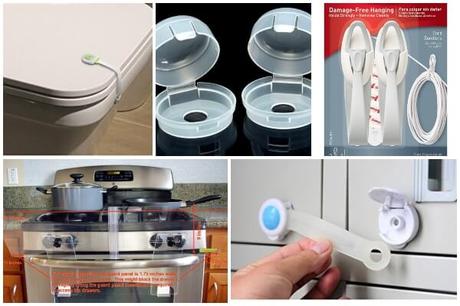
- Toilet Seat Lock
- Stove Knob Covers
- Cord Bundlers
- Stove Guard
- Appliance latch
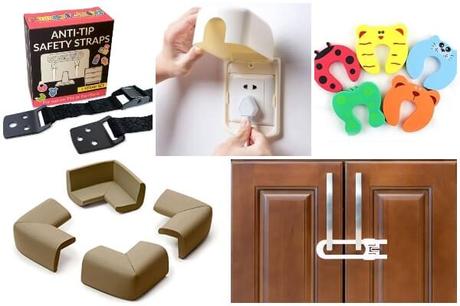
- Anti-trip Safety Straps for TV
- Electrical Outlet Covers
- Door stoppers
- Corner guards
- Cabinet locks
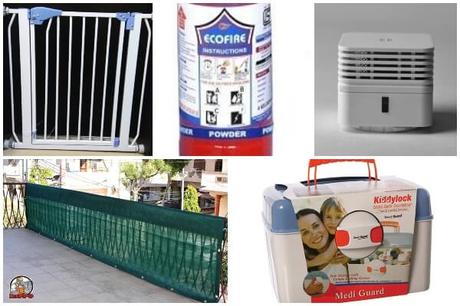
- Staircase gate
- Fire extinguisher
- Smoke Detector
- Safety netting
- Medicine Safe
IMPORTANT: No amount of childproofing can replace adult supervision. Just because you’ve child proofed your living room doesn’t mean that baby can play there alone while you’re in another room.
Please remember that child proofing is not a one time thing – it needs to be updated as your child grows and finds more places to explore. While ensuring your little one’s safety is essential, make sure you’re not stifling her spirit by restricting her all the time. The aim is not to stop your child from moving anywhere or touching anything; it’s to create a safe space where she can explore her natural curiosity without having to be told ‘No’ at every step. With a little effort on your end, you can make your home a safe and happy haven for your baby to grow and develop to her full potential.
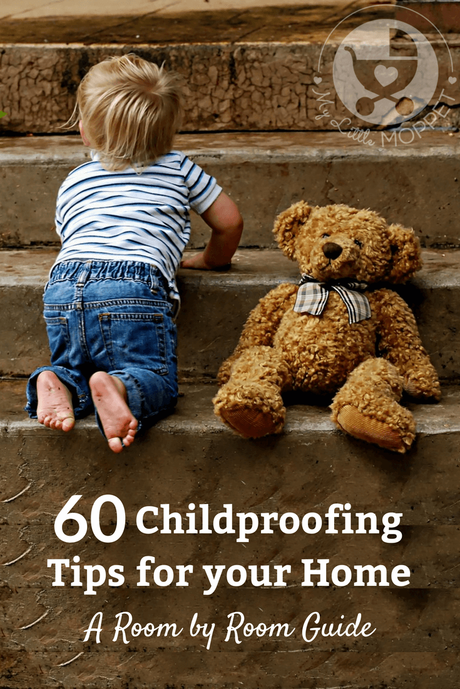
Filed Under: Parenting, Shopping Guide Tagged With: parenting, parenting hacks, parenting tips, safety, safety tips
